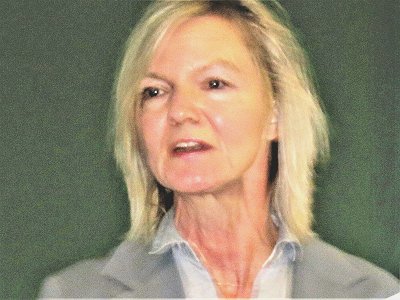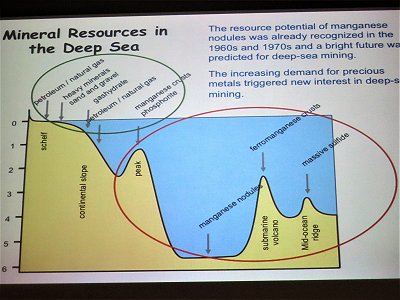This year's BreMarE Day celebrating Marine Ecology placed the emphasis on the marine resources we are already using or are about to exploit and the pros and cons of human use. The Ocean Sciences Colloquium took place 23 November 2016 at the Center for Research and Education of the University of Bremen.
 Prof. Wilhelm Hagen, Vice Dean and Director of the Center for Research and Education at the University of Bremen and host of the event welcomed the participants, students and colleagues mostly from northern German places of learning and research.
Prof. Wilhelm Hagen, Vice Dean and Director of the Center for Research and Education at the University of Bremen and host of the event welcomed the participants, students and colleagues mostly from northern German places of learning and research.
Prof. Andrea Koschinsky of the Jacobs University of Bremen gave an overview talk titled "Deep-Sea Mining: Perspectives and Environmental Impact". Deep-sea mining has recently come more into public focus. Rising prices for rare earth minerals used in wind turbines, smart phones, solar panels and other appliances have renewed interest of mining companies.
Even though deep-sea mining is not expected to be profitable in the next 10 or 20 years, depending on the development of metal prizes, considerations in favour are several, such as diminishing returns from land-based mines, avoidance of toxic drainage on land, mobile infrastructure that would be reusable in different places, avoidance of political interference and some types of conflict.
The International Seabed Authority (ISA) created under the UN Convention of the Law of the Sea and responsible for overseeing exploration activities and mining in international waters has only a small team. In addition to licences issued by national governments for exploration and mining within their exclusive economic zones (EEZ), ISA has issed some 25 licences for exploration in the high seas. A code for mining in international waters is still under development, while some governments may move ahead faster in the tension between short-term economic gain and environmental protection..
The licences in the high seas come with an obligation for 15 years of preparatory research and reporting of results. The Clarion-Clipperton Zone (CCZ) in the Central Pacific is one of the meeting areas of tectonic plates with high grade ores under study.
 The research results so far suggest that the formation of small nodules rich e.g. in manganese on the surface of submarine plains take two to three million years. Ferromanganese crusts accumulate even more slowly, over some 20 million years. Exploiting these would involve breaking up these crusts with the risk of creating extensive plumes, which may smother the ecosystems within their reach.
The research results so far suggest that the formation of small nodules rich e.g. in manganese on the surface of submarine plains take two to three million years. Ferromanganese crusts accumulate even more slowly, over some 20 million years. Exploiting these would involve breaking up these crusts with the risk of creating extensive plumes, which may smother the ecosystems within their reach.
A second major focus are massive sulfide deposits associated with submarine volcanoes and hydrothermal vents with high grades ores, such as two to ten per cent copper, five to 20 per cent zinc, gold, silver and indium.
The Canadian mining firm Nautilus Minerals Niugini Ltd has e.g. received a green light from the government of Papua New Guinea to mine about 50 kilometres offshore in the Bismarck Sea, at a depth of 1.6 kilometres in its exclusive economic zone. This triggers concern among many scientists as we know so little about the deep sea and its fragile ecosystems.
Thanks to a research cruise off Peru in 2015, the site of disturbances 16 years earlier could be checked. The plough tracks were still visible in great detail, an indication that a new equilibrium would take a very long time to develop,
For a summary of findings of the MIDAS project funded under the European 7th Research Framework Programme that provides further results click here.








